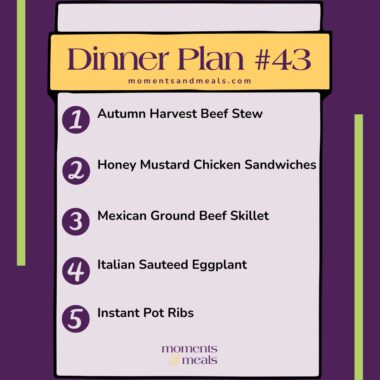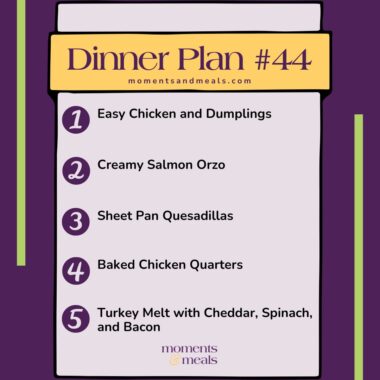Barley is one of the most used grains in the world and is found in many healthy recipes. It has so many nutritional values to it, but sometimes it just won’t work. Whether you are simply out of it and dinner needs to be done soon or your diet won’t allow it due to gluten sensitivity, having a substitute for barley is a good idea.
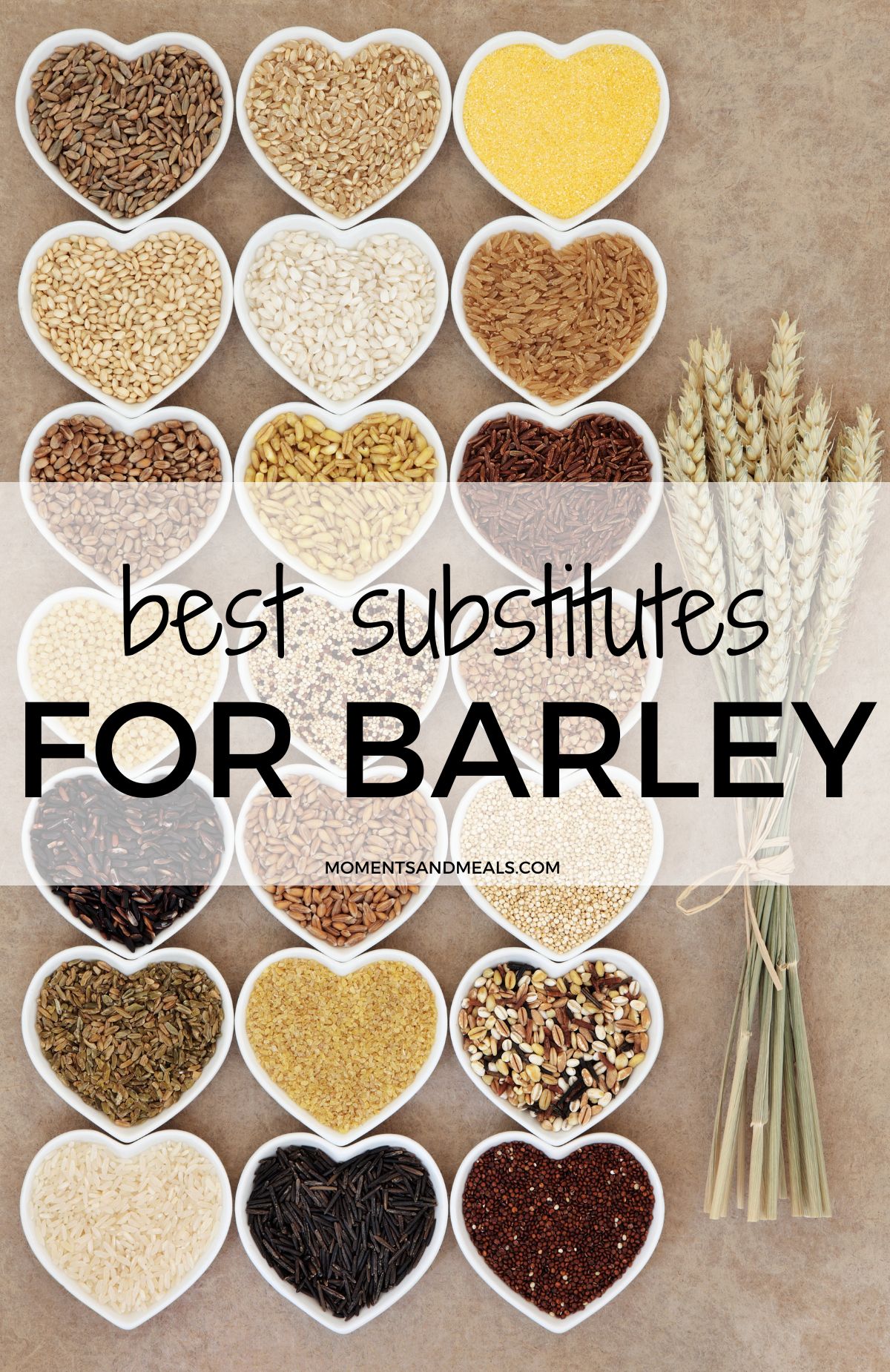
Barley is a complex grain that is so diverse in its meals. In fact, the alternative you choose will depend on what recipe you are making and what type of barley the recipe calls for. A barley replacement for stew would be different than a barley flour replacement for muffins or a warm breakfast with flakes.
Table of contents
What is Barley?
Barley is an ancient grain that has been used in breads, stews, and salads for centuries. It is a whole grain and is jam-packed with nutritional benefits like fiber, vitamins, and minerals.
Barley has a mild, nutty taste making it the perfect addition to many meals. While its popularity has risen in recent years, barley originated in the Mediterranean and has been a pantry staple there for centuries.
It has good reason to be so popular with how high of a nutritional value it has. Full of vitamins, minerals, and proteins, this grain is so hearty that it will keep you full for hours.
Unfortunately, adding barley to one of your favorite dishes may not be an option. Luckily, there are plenty of alternatives for families to enjoy still.
Hulled Barley vs. Pearled Barley
Before we get into the various substitutes for barley, it is important to understand the differences between hulled barley and pearled barley.
Both are delicious, but different recipes will call for one or the other. This is important information for choosing the best barley alternative for your meal.
Hulled barley is a more nutrient-dense version. With the outer hull removed (it’s inedible), the hulled barley will still have the bran and the endosperm layer attached to it. This does mean it will require a long soaking period before you can begin cooking it. It’s best to soak for a few hours to ensure the grain is fully softened. In addition to soaking, you will also need to increase the cooking time to a little more than an hour.
As for pearled barley, there is much less work but the downside is decreased nutritional value. It is made by removing the outer husk as well as the bran layers and, as a result, reduces the fiber content and disqualifies it as being a whole grain.
Both versions of barley are wonderful and can be added to a variety of meals.
What is the Difference Between Barley and Wheat?
One grain that is often compared to barley is wheat and, while these two grains may look similar on the surface, they are processed and used differently.
Processing and Use
The main difference is that wheat needs to be milled (ground) while barley doesn’t.
Whole wheat flour contains the entire grain – germ, endosperm, and bran – and maintains much of its nutrients. On the other hand, regular milled wheat flour, such as white flour, contains just the (mostly carb) endosperm. Wheat flours are used to make baked goods, pasta, semolina, bulgur, couscous, and breakfast cereals.
Barley can be cooked and eaten whole similar to rice. It can also be ground into flour and is often used as an additive to wheat-based products to increase their nutritional value. However, most barley produced today is used for livestock feed and alcohol production.
Nutritional Content
Though barley remains particularly rich in dietary fiber, both grains have similar calorie, carb, protein, and fat counts, irrespective of processing.
Both whole wheat flour and barley (hulled and pearled) contain similar amounts of minerals like zinc, iron, magnesium, and potassium. However, barley is a better source of minerals compared to regular wheat flour.
As for vitamins, both grains have their strong points. Hulled barley is rich in thiamine and riboflavin while whole wheat flour is richer in vitamins B6 & B5, folate, and niacin. Refined wheat flour has the lowest amount of vitamins, though most producers add some back in after milling.
With its high protein content and ability to lower the risk of heart disease, barley is a staple food in many households across the globe.
What are the Health Benefits of Barley?
There are plenty of reasons to add barley (or one of the many substitutes on this list) into your diet!
Nutritionally speaking, barley is an ideal grain to add to your diet. Some of the best reasons to try barley are:
- Studies have linked barley to weight loss
- Barley has high levels of B Vitamins, especially vitamin B6
- This is one of the few grains that contain all of the essential amino acids to form a complete protein for muscle growth
- Barley has a low glycemic index and can help improve blood sugar control
- Barley can lower cholesterol levels
Barley is a wonder grain. There are times, however, when it is necessary to use an alternative like the ones listed below.
Gluten-Free Alternatives to Barley
Unfortunately, barley is not gluten-free. Barley contains a type of gluten called hordeins which is the main reason people with gluten sensitivities or those on a gluten-free diet look for a substitute for barley.
Some of the best substitutes for barley are common ingredients that you can find at almost all grocery stores. Here are some of the top gluten-free alternative grains on the market:
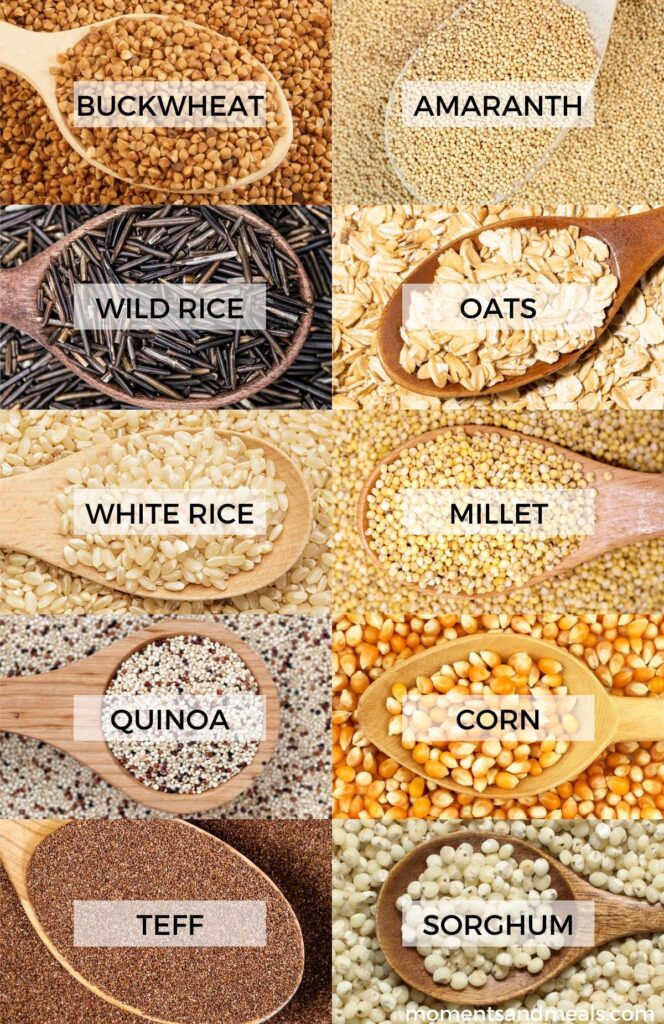
- 1) Rice. All rice, including brown rice, white rice, and wild rice, is gluten-free. Rice is the ideal gluten-free substitute for barley in any soup or stew.
- 2) Oats. Oats are naturally gluten-free cereal grains, making them a perfect barley substitute for hot breakfast recipes. Be sure to choose a brand that specifies its gluten-free status, as some brands may contain wheat.
- 3) Buckwheat. This superfood can be eaten raw after soaking, boiled, or ground into flour. Buckwheat groats are nutty and slightly bitter – a stronger flavor profile than barley – but are still incredibly versatile. Easily substitute it in breakfast cereals, lunch, dinner, and even muffin recipes.
- 4) Amaranth. Though not technically considered a cereal grain, amaranth’s nutritional profile and usage is similar to wheat and oats. This earthy, nutty antioxidant works great in many recipes as a barley alternative.
- 5) Corn. Corn is a great gluten-free barley substitute in sides or salads, adding a lovely sweet taste and crunchy texture.
- 6) Millet. Nutrient-rich and starchy, this small round cereal grain is easily substituted in gluten-free side dishes, salads, or as flour in baked goods.
- 7) Quinoa. A popular nutrient-dense seed similar to amaranth and buckwheat, quinoa comes in red, black, and white varieties. It’s easy to incorporate into both sweet and savory recipes like breakfast power bowls, veggie lunch wraps, side salads, or even sweet puddings.
- 8) Teff. This tiny but mighty gluten-free grain has an earthy, nutty flavor, with some varieties also having a hint of sweetness. Teff is often used in porridges and stews, and ground into flour for flatbreads.
- 9) Sorghum. A unique cereal grain that can be cooked like barley, ground into flour, or popped like popcorn! (There’s even a sweet variety cultivated to make a natural sweetener.) Sorghum is a great gluten-free barley substitute in salads, sides, and pilafs.
For almost any recipe, these 9 substitutes for barley will do the trick. Even better? They’re all filled with vitamins and minerals, so you aren’t missing out on fueling your body just because you are avoiding gluten.
Barley Flakes Substitute
Barley flakes are pieces of barley that are sliced and flattened after being hulled (the outer shell is removed). Once cooked, these flakes have a similar texture and appearance to oats.
Barley flakes are used primarily in hot cereal or porridge recipes, for which the most common barley alternative is rolled oats. However, there are a few other grains you can use in place of barley in breakfast recipes:
- 1) Rolled Oats
- 2) Buckwheat Flakes
- 3) Millet
- 4) Amaranth
- 5) Quinoa
- 6) Teff
Check out some of these mouth-watering alternatives to a barley breakfast porridge:
- Banana Pecan Amaranth Porridge
- Easy Quinoa Pudding
- Instant Pot Teff Porridge
- Millet Porridge with Honey Glazed Plums
Pearl Barley Substitute
Pearl barley is a larger grain with a distinctly thick and chewy texture. You can certainly choose from any of the gluten-free options listed above to substitute pearled barley in a recipe. If gluten content isn’t an issue, rather you’d prefer to maintain a similar size and texture to replace pearl barley in your soup, stew, side, or salad, consider these alternatives.
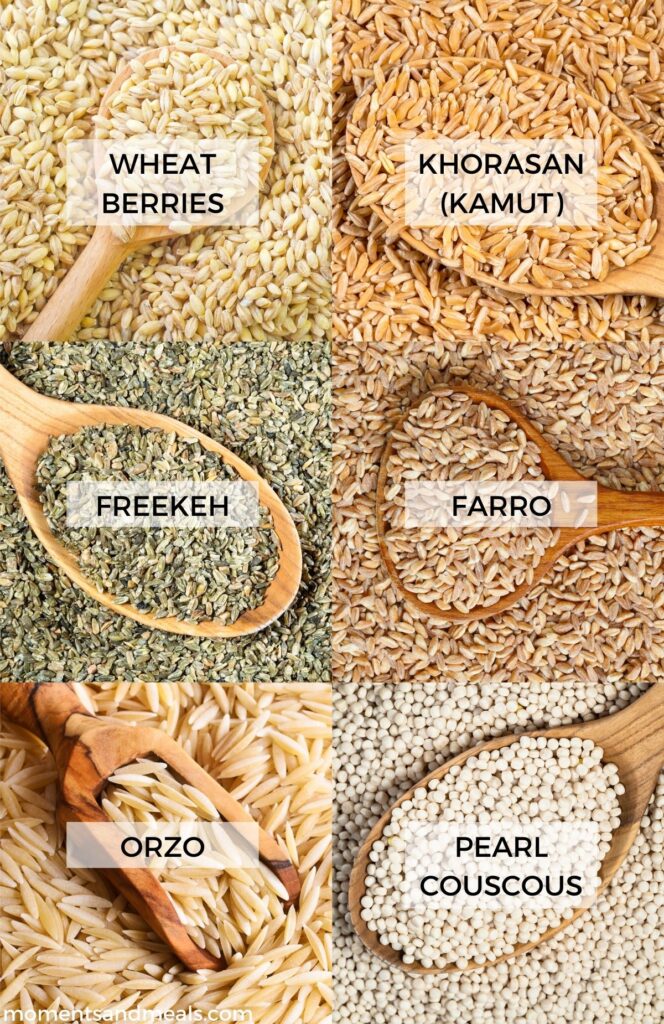
These four are the most similar alternatives to pearl barley:
- 1) Farro. High in protein and fiber, this ancient grain is typically found in pearl and semi-pearl varieties.
- 2) Freekeh. Underripe durum wheat that is smoked and then “rubbed,” resulting in a toasty green kernel. Freekeh is very similar to barley, but with the added component of a slightly smoky flavor.
- 3) Kamut. Kamut is the trademark name for Khorasan wheat, which is high in protein and fiber. Its size and texture are very similar to barley and rice.
- 4) Wheatberries. Wheatberries are the edible, whole-grain parts of the wheat kernel.
The next five options are a little different than pearly barley, but not as different as millet or quinoa!
- 5) Rice. Just about any variety of rice can be substituted for pearl barley.
- 6) Sorghum. A smaller, round grain, its shape isn’t quite like barley but it does have that familiar chew!
- 7) Buckwheat. These small, irregularly shaped grains are quite different in shape and size, but they’re still larger than some of the other options and have a bit of that chewy texture.
- 8) Pearl Couscous. Actually a type of pasta, it has a similar size and chewy texture to pearl barley.
- 9) Orzo. Often used in pilafs, orzo is another type of tiny pasta, but is larger than barley.
For example, farro, wheatberries, or pearl couscous would be a great substitute in this Barley Cucumber Salad.
Barley Flour Substitute
Barley flour is a creamy, high-fiber flour with a mildly sweet and nutty flavor. Used primarily for dense breads and pastries, it is also found in recipes for flatbreads and baby foods. Many bakers will combine standard flours with barley flour to create lovely textures and enhance flavor.
Finding a great substitute for your baked goods doesn’t have to be challenging. In fact, your best option for a barley flour alternative can be found in the aisle of your local market:
- 1) Bread Flour
- 2) Cake Flour
- 3) Whole Wheat Flour
- 4) All-purpose Flour
However, your ideal barley flour substitute will depend on what you’re making and what you are trying to achieve. Here are a few other suggestions to try, though most are best combined with one of the standard flours listed above:
- 1) Almond Flour. Gluten-free, low-carb, high-fat. If you are looking for that mild nutty flavor, this is the perfect substitute.
- 2) Tapioca Flour. This is a sweeter, starchy flour and is ideal for baking yummy treats like cupcakes, muffins, or donuts.
- 3) Spelt Flour. A mildly sweet and nutty, whole-grain flour that results in a subtle, soft crumb. Perfect in pancakes, it can also be used in breads or scones when combined with other flours to avoid being too dry and crumbly.
- 4) Buckwheat Flour. Hearty, nutty, and gluten-free, this flour alternative is best in smaller quantities for foods like pancakes and combined with other flours for quickbreads.
- 5) Kamut Flour. The commercial name for Khorasan wheat, this flour is high in protein and fiber and contains gluten. Kamut provides a rich, buttery flavor but can be dense and crumbly on its own.
It is important to note that when changing the type of flour in a recipe, you’ll need to consider making adjustments to the remaining ingredients and cooking times as well. King Arthur has an in-depth article about baking with ancient grain flours that explains how different flours work within baked goods and what proportions have the best results.
There are so many reasons to try barley. From its nutritional value to its mild flavor, barley is a staple in many homes.
Sometimes, however, you need to substitute barley for another grain. Whether you’re simply unable to find barley (or forgot to buy it) or because you are on a gluten-free diet, you now have a list of great alternatives to choose from!

